

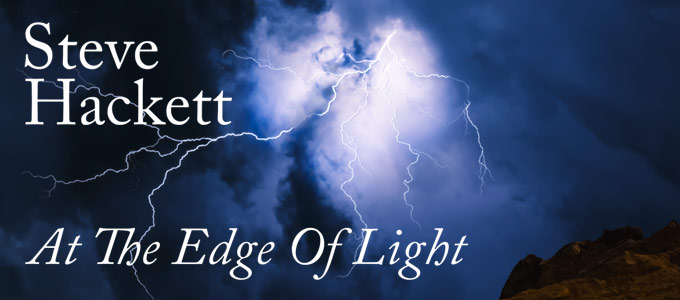
We certainly cannot complain: Steve Hackett’s artistic output is almost overwhelmingly large and impressively good. Alongside concerts recorded in sound and image and box sets of his back catalogue he puts out solo albums at a steady pace of one every second year. Wolflight came out in 2015, The Night Siren in 2017 and here he is in 2019 introducing a new rock album, At The Edge Of Light. Add to that the 80 plus shows he usually plays in a year and you have a most impressive creative output.
The new album contains ten tracks and there are two bonus tracks.
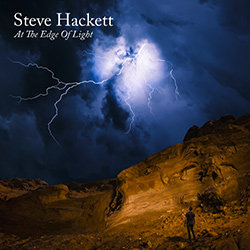 Fallen Walls and Pedestals
Fallen Walls and Pedestals
Beasts In Our Time
Under The Eye of the Sun
Underground Railroad
Those Golden Wings
Shadow and Flame
Hungry Years
Descent
Conflict
Peace
Bonus Tracks
Teach Yourself Vulcan *
Roulette *
* on the Japanese version only, available here.
At The Edge Of Light has been released by InsideOut, the record company that has been Steve’s home for many years. The termin “record company” is, in fact, most apt. InsideOut sets standards in release forms and formats. Like all of his albums, At The Edge Of Light came out as a mediabook with the album CD and a bonus DVD with a 5.1 mix of the album (done by Roger King) and an entertaining “behind the scenes” feature. The booklet contains art and information about the album. This time, the additional disc with bonus material comes on a “humble” DVD instead of a Blu-ray.
The album is also available as a standard CD in a Jewel Case, which is perfect for all those who want a no-frills physical version. If you do not need to hold the album in your hand you can, of course, also buy a download of it. A really neat detail in the Mediabook: DVDs have to have a rating on the front of the package and other information, so usually album covers are spoilt by loads of stickers. Inside Out have a separate sheet with the cover and the rating label und the information printed and lay that on top of the cover proper before the mediabook is packaged. This way you get the mediabook with a clean cover – very good thinking!
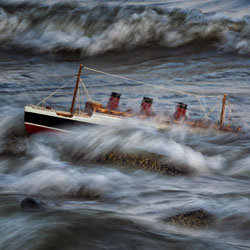 Speaking of knick-knacks: The album has also been released on vinyl. InsideOut have been putting out high-quality 180g vinyl records for years. This album is a double LP with a CD version in a cardboard sleeve. As another gimmick, the fourth side is empty, but etched, like the fourth side of the Genesis Calling All Stations 2LP. If you thought one black 2LP/CD version was enough you are going to be amazed: At The Edge Of Light comes in six different vinyl designs. InsideOut sell the classic black pressing as well as clear vinyl and a clear red variety. Burningshed offer an exclusive white vinyl pressing, Steve Hackett offers a so-called “vortex vinyl”. Add to all that a clear blue pressing for JPC, and collectors are bound to rejoice or despair.
Speaking of knick-knacks: The album has also been released on vinyl. InsideOut have been putting out high-quality 180g vinyl records for years. This album is a double LP with a CD version in a cardboard sleeve. As another gimmick, the fourth side is empty, but etched, like the fourth side of the Genesis Calling All Stations 2LP. If you thought one black 2LP/CD version was enough you are going to be amazed: At The Edge Of Light comes in six different vinyl designs. InsideOut sell the classic black pressing as well as clear vinyl and a clear red variety. Burningshed offer an exclusive white vinyl pressing, Steve Hackett offers a so-called “vortex vinyl”. Add to all that a clear blue pressing for JPC, and collectors are bound to rejoice or despair.
The album artwork was done once more by Angéla and Maurizio Vicedomini (iconphoto). They have provided images for Hackett’s two previous albums and created the photos and montages on Genesis Revisited II. They have also published a book full of Genesis-themed photography called Genesis – In Our Flight Of Fancy.
 At The Edge Of Light has ten tracks. Its playtime of slightly over 54 minutes makes it a compact album for the prog genre. The Night Siren (11 tracks, 58 minutes) and Wolflight (10 tracks, 55 minutes) are of almost equal length. At The Edge Of Light stands out because of the 11 ½ minutes long Those Golden Wings. Steve Hackett has not released a song of such length since Beyond The Shrouded Horizon.
At The Edge Of Light has ten tracks. Its playtime of slightly over 54 minutes makes it a compact album for the prog genre. The Night Siren (11 tracks, 58 minutes) and Wolflight (10 tracks, 55 minutes) are of almost equal length. At The Edge Of Light stands out because of the 11 ½ minutes long Those Golden Wings. Steve Hackett has not released a song of such length since Beyond The Shrouded Horizon.
Steve shares songwriting duties with his wife Jo and with Roger King. He wrote two songs on his own (Hungry Years and Descent), all the others were written with either Roger King or Jo Hackett or both. Steve also produced the album together with his long-standing keyboarder and sound inventor Roger King, who has founded his own band, The Mute Gods. Only one song was co-produced with Ben Fenner, who will be responsible for the sound at the live shows.
The album features a number of interesting musicians. Roger King, Gary O’Toole, Jonas Reingold and Rob Townsend are in Steve’s core band. Amanda Lehmann and John Hackett has appeared on many of Steve’s releases as well as a number of live shows. Singers Durga and Lorelei McBroom are known from Pink Floyd; they sing on Underground Railroad. Indian musician Sheema Mukherjee plays the sitar on Shadow And Flame, while Paul Stillwell adds didgeridoo to Under The Eye Of The Sun. Besides Gary O’Toole (Fallen Walls and Pedestals) there are three other drummers: Nick d’Virgilio drums on Those Golden Wings, Simon Phillips on Hungry Years while Gulli Briem (of Djabe) plays on Under The Eye Of The Sun. This list is not complete, but it will give you an indication of what you are going to hear.
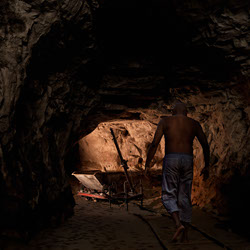 Steve’s album begins with a classic “current Steve” album, i.e. with outlandish sounds. The first half has a number of songs that resemble classic song structures. Beasts In Our Time seems like the real opener of the album. The song develops through a pattern of verse and chorus into a contrasting instrumental finale. Under The Eye Of The Sun is similar, but faster – and the break occurs already in the middle of the song. The track speeds up again after a quiet bit before it culminates in an orchestral finale. The McBroom sisters sing remarkable first lines in Underground Railroad before Steve takes over. The song grows in a rhythm fed by guitars (and it does sound like trains) towards a second half that is quite progressive in its structure and the instruments employed). With this song ends what may be styled the prelude to At The Edge Of Light, and Those Golden Wings, the central piece of the album, begins. Steve comes close to perfection here. The song has an impressive structure, the melody of the first part is enchanting and romantic. Roughly three minutes into the song an orchestral tour de force begins the like of which has never been heard on any of Hackett’s rock albums. The song returns to its original melody after this intermezzo before it embarks on another tour de force towards the end. Those Golden Wings is hands down the highlight of the album, and it does not waste the time it justly demands from the listener.
Steve’s album begins with a classic “current Steve” album, i.e. with outlandish sounds. The first half has a number of songs that resemble classic song structures. Beasts In Our Time seems like the real opener of the album. The song develops through a pattern of verse and chorus into a contrasting instrumental finale. Under The Eye Of The Sun is similar, but faster – and the break occurs already in the middle of the song. The track speeds up again after a quiet bit before it culminates in an orchestral finale. The McBroom sisters sing remarkable first lines in Underground Railroad before Steve takes over. The song grows in a rhythm fed by guitars (and it does sound like trains) towards a second half that is quite progressive in its structure and the instruments employed). With this song ends what may be styled the prelude to At The Edge Of Light, and Those Golden Wings, the central piece of the album, begins. Steve comes close to perfection here. The song has an impressive structure, the melody of the first part is enchanting and romantic. Roughly three minutes into the song an orchestral tour de force begins the like of which has never been heard on any of Hackett’s rock albums. The song returns to its original melody after this intermezzo before it embarks on another tour de force towards the end. Those Golden Wings is hands down the highlight of the album, and it does not waste the time it justly demands from the listener.
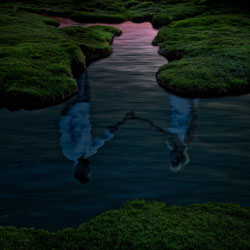 Shadow And Flame is a kind of hybrid: What happens when Indian sounds suddenly sound accessible in Western ears? When it does, Hackett has probably hit the right notes in his collaboration with Indian musician Sheema. The tracks moves effortlessly from his rock music to her Raga music and fuses both styles as if there was nothing to it.
Shadow And Flame is a kind of hybrid: What happens when Indian sounds suddenly sound accessible in Western ears? When it does, Hackett has probably hit the right notes in his collaboration with Indian musician Sheema. The tracks moves effortlessly from his rock music to her Raga music and fuses both styles as if there was nothing to it.
Hungry Years provides some rest. Steve wrote it as a homage to the folk songs of the 1960s and 1970s. Unfortunately the song sticks out like a sore thumb, and different singer would have made the track stronger.
Descent and Conflict are instrumental. Descent is threatening, like a mixture of Ravel’s Bolero and military music with Steve’s gloomy guitar and a blanket of sounds from the keyboards. Conflict, on the other hand, seems more restless, friendly even and leaves Steve with more space for his guitar. These are two accomplished interludes between what was and what is to come. What comes, is the finale of the album, Peace. This last track could be described as a dramatic reduction of Those Golden Wings to half its length. This is not meant to debase the song. Peace does not require the time Those Golden Wings demands. Five minutes are quite sufficient and bring the album to a dignified close.
… but then there is more.
The Japanese are treated to two bonus tracks on their version of the album. You have to realize that these tracks have never been meant to be part of the album track list. They are what they are called: bonus tracks (Steve is quite candid about it in our recent interview). Teach Yourself Vulcan has precious little to do with Vulcans or StarTrek, as Steve revealed in an interview. It is a lively instrumental borne on the wings of Steve’s playful but somehow destructive guitar. Roulette is even more playful and takes a number of turns. Teach Yourself Vulcan appeared to be the favourite before Roulette takes the palm. Both tracks were recorded in one day and have no vocals.
 Steve has this to say about the album:
Steve has this to say about the album:
"In these dangerous times, deep shadows feel even sharper than usual and we find ourselves standing at the edge of light... The contrast between dark and light weaves its way throughout the album in many ways, from the sense of good fighting evil through to the interplay of dark and light opposites magically combining in cultures, including the heartbeat of India and primal tribal rhythms. Ultimately, this album embraces the need for all musical forms and cultures to connect and celebrate the wonder of unity in this divided world"
At The Edge Of Light is Steve Hackett taking us on another intriguing musical trip. Once you realize that light, particularly its dimmer variety, has been a central motive on his last three albums Wolflight, The Night Siren and At The Edge Of Light the case is clear: These three albums are a trilogy. All three albums are very similar sound-wise, but At The Edge Of Light is the strongest of the trio.
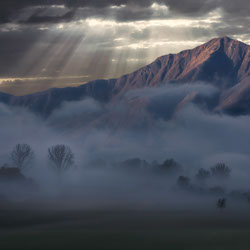 The sound is, however, the central point of critique. At The Edge Of Light is not a pleasure to listen to regarding its sound, and the drums do not sound really good. Roger King ought to leave his “sound box” and give free reign to dynamism. The fact that Steve Hackett’s albums sound unmistakably like his albums can become a problem when you repeat yourself stylistically more often than you have to. The album has brilliant drummers, but you wouldn’t realize which songs they drum on. Their individual drum style could have been reflected in the sound, adding a special flavor. Future albums may consider two aspects: A different, better sound and an attempt at a different creative challenge, perhaps by not taking up all ideas everywhere or maybe by intentionally limiting your options, as Peter Gabriel has done several times.
The sound is, however, the central point of critique. At The Edge Of Light is not a pleasure to listen to regarding its sound, and the drums do not sound really good. Roger King ought to leave his “sound box” and give free reign to dynamism. The fact that Steve Hackett’s albums sound unmistakably like his albums can become a problem when you repeat yourself stylistically more often than you have to. The album has brilliant drummers, but you wouldn’t realize which songs they drum on. Their individual drum style could have been reflected in the sound, adding a special flavor. Future albums may consider two aspects: A different, better sound and an attempt at a different creative challenge, perhaps by not taking up all ideas everywhere or maybe by intentionally limiting your options, as Peter Gabriel has done several times.
Steve Hackett has brought out an extremely strong album with At The Edge Of Light. It shows a lot of what he can, but it suffers a bit from its sound. It could be – it is – the finale of a fine trilogy of albums (with Wolflight and The Night Siren). Those Golden Wings is a great song, we dare say: an instant classic. Shadow And Flame is a great example of the way two completely different styles of music can come together and still sound good. At almost 69 years of age, Steve Hackett is obviously still full of new ideas and a desire to write and record. We may count ourselves lucky that he keeps giving us such outstanding new music so often.
By Christian Gerhardts
English by Martin Klinkhardt
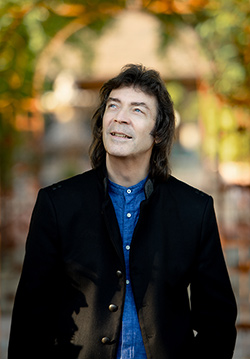
Between The Night Siren and At The Edge Of Light Steve has also released the live-album Wuthering Nights: Live In Birmingham and the boxset Broken Skies - Outspread Wings.
There are a couple of interesting contributions on the album: Nick D'Virgilio and Simon Phillips (USA) on drums, Sheema (sitar) from India, Island's drummer and percussionist Gulli Briem, Tar-player Malik Mansurov and bassist Jonas Reingold from Sweden.
Besides them: Paul Stillwell (Didgeridoo), Rob Townsend (Sax/Bass/Clarinet and Duduk), Amanda Lehmann (vocals), John Hackett (Flute), drummer Gary O'Toole, Roger King and Ben Fenner on Keyboards, Dick Driver (Double-Bass), Violinist and Viola player Christine Townsend. The album was produced by Roger King.
At The Edge Of Light was released on 25th Jan 2019 on CD, CD/DVD Mediabook (including a 5.1 version of the album), 2LP/CD and in digital formats.
Order options:
Vinyl editions:
The “Vortex vinyl” edition may be most popular. It is only available from Steve Hackett’s webstore (click here).
JPC (Germany) offer an exclusive version in clear blue vinyl. Other LP versions include: clear vinyl (InsideOut shop), white vinyl (Burningshed), transparent red vinyl (InsideOut shop, out of stock). This brings the album up to six different vinyl releases.
Steve Hackett is going to tour again in 2019. Tickets are on sale in various countries, and shows have already sold out. Go here for all the tour dates and ticket information.
You may also be interested in the interview we conducted with Steve Hackett on January 25, 2019.
